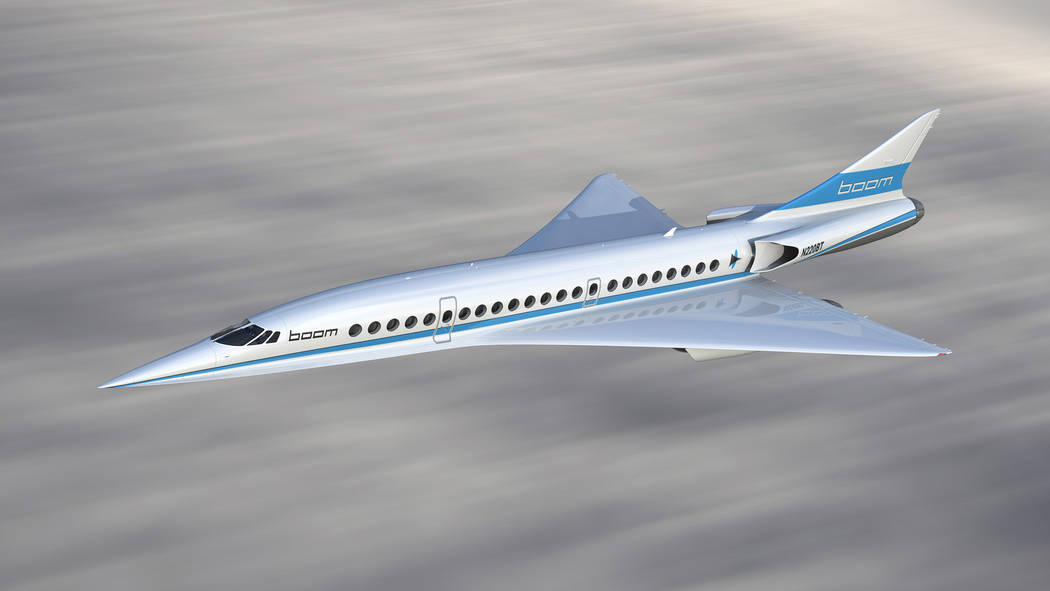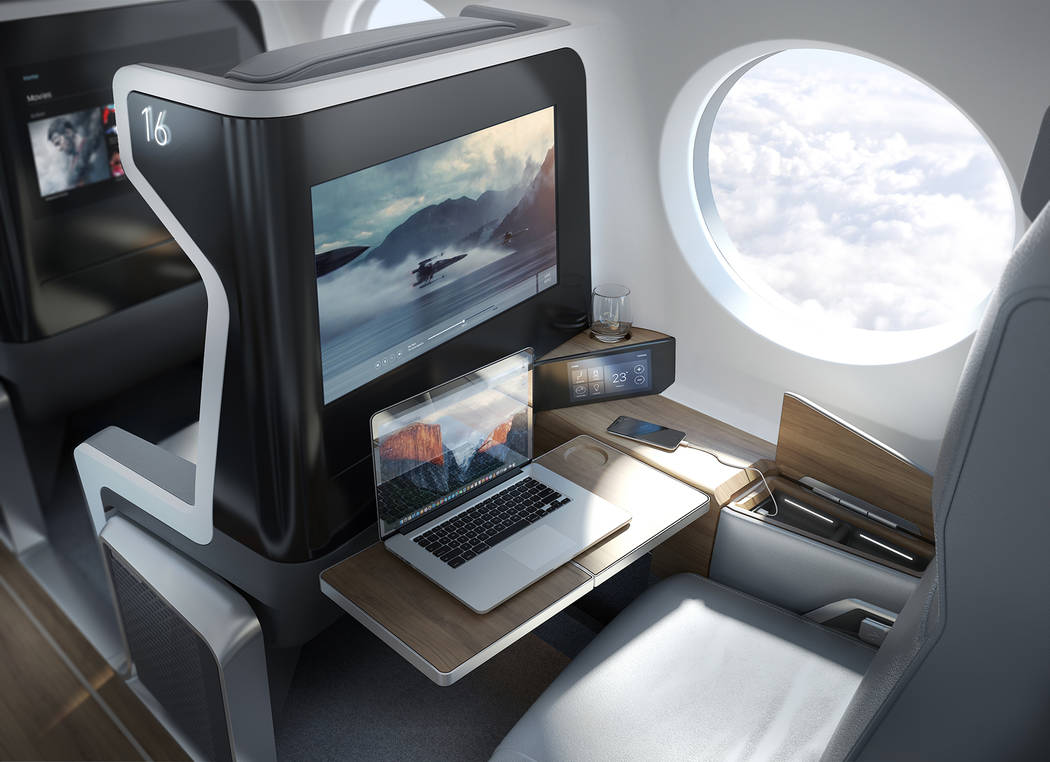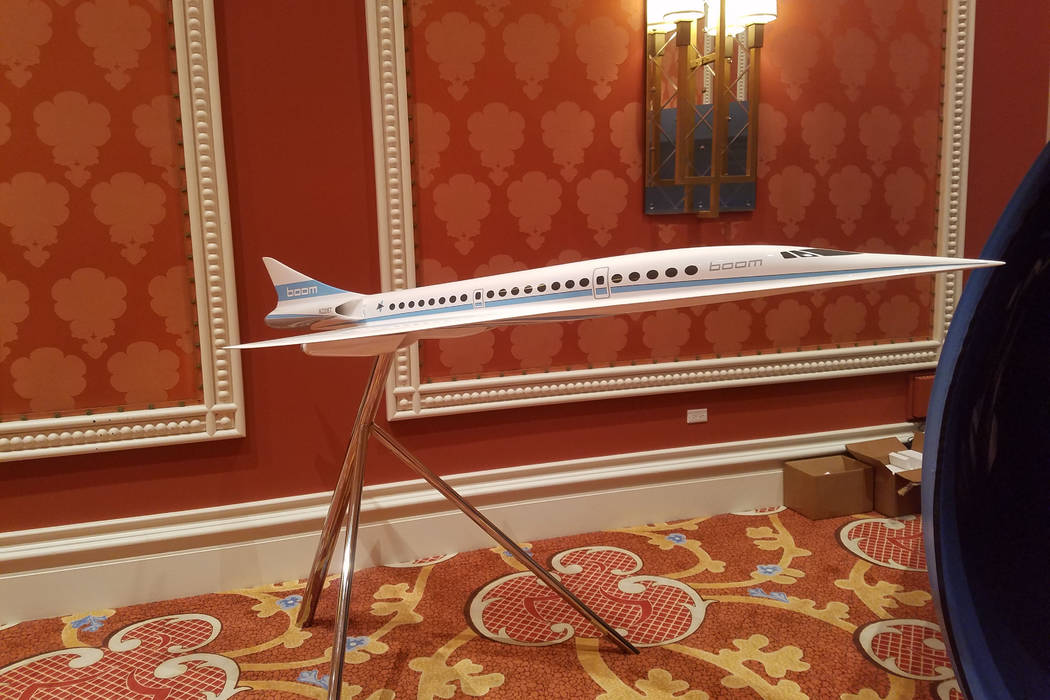Boom Supersonic provides the ‘wow’ at Las Vegas aviation conference



Get ready for a fast disrupter.
One of the biggest “Wow!” moments of Boyd Group International’s 22nd annual Aviation Forecast Summit this week was Blake Scholl’s presentation on Boom Supersonic, a company developing the first supersonic passenger airliner since the Concorde was retired in 2003.
Scholl, the founder and CEO of Denver-based Boom, showed off a model of his company’s 55-seat aircraft that is expected to start commercial service in late 2023 and fly at Mach 2.2 — 1,451 miles an hour.
“Time saved is life gained,” Scholl told 400 delegates attending the Boyd summit at the Wynn Las Vegas.
“Our goal is for people to be able to fly to London from New York, go to a business meeting and return home in time to tuck the kids into bed,” said Scholl, who gave away a seat on Boom’s first flight to an attendee.
Scholl figures that a New York-to-London flight on his jet would cut a seven-hour flight to three hours and 15 minutes, a San Francisco-to-Tokyo 11-hour trip to five hours and 25 minutes and a 15-hour Los Angeles-to-Sydney flight to six hours and 45 minutes.
“You could actually take a long weekend and go to the opera in Sydney,” he said.
Thanks to carbon-fiber technology, Boom designers can build the plane that would fly 2.6 times faster than a conventional airliner. The company is working to build a smaller XB-1 “Baby Boom” prototype aircraft that will be ready to fly in 18 months.
Subsonic test flights are planned from suburban Denver’s Centennial Airport, while supersonic testing will occur over the California desert near Edwards Air Force Base.
Richard Branson’s Virgin Atlantic has already signed on to be the launch customer for the jet with options for 10 aircraft. Scholl said he has 76 preorders already on his books.
Scholl said the plane would have a one-by-one seat configuration so that every passenger would have both a window and an aisle seat.
Mike Boyd, president and CEO of Boyd Group International, predicted the Boom jet would become a core piece of an airline’s intercontinental fleet. The company presented alongside manufacturers Boeing, Airbus, Embraer, Bombardier and Mitsubishi at the Boyd conference.
Boom could have some regulatory challenges flying over the United States. When the Concorde flew in U.S. airspace, it was restricted to subsonic speeds because of the sonic boom that occurs when an aircraft exceeds the speed of sound.
Southwest disruption
Southwest Airlines’ presentation at the Boyd conference was somewhat subdued as the company processed the effects of Hurricane Harvey on one of its leading Texas destinations, Houston.
Andrew Waterson, executive vice president and chief revenue officer for the busiest commercial air carrier at McCarran International Airport, said Southwest is staking a claim to being California’s dominant carrier as other airlines grab headlines with mergers and buyouts.
A company party at Southwest’s Dallas headquarters to celebrate the Wednesday arrival of the company’s new Boeing 737 Max was canceled. Waterson said Southwest will retire the last of the oldest planes in its fleet, the Boeing 737-300, on Sept. 29 and will begin flying the Max jets Oct. 1.
The Max will burn 20 percent less fuel than the older planes, and Waterson said they’ll be quieter as well.
Fourteen Max jets will be delivered to Southwest by the end of the year.
California competition
Waterson’s presentation on California dominance was a dig at Alaska Air Group, which closed on its acquisition of Virgin America late last year.
Alaska CEO Brad Tilden addressed the Boyd conference just before Waterson, who emphasized that Southwest carries more passengers to, from and within California than any other airline.
“Lots of airlines have said they are the favorite airline of California,” Waterson said. “But we clearly have the top share.”
Waterson said with the advent of the Transportation Security Administration’s Pre-Check program and ride-hailing apps, “leisure travel is back,” and the hassle factor has been eliminated.
Waterson said new California flights also will benefit Las Vegas as minimal delays and favorable fares will encourage more people to fly than drive.
He also got a dig into high-speed rail, calling flying faster and more affordable than train travel when it arrives.
Contact Richard N. Velotta at rvelotta@reviewjournal.com or 702-477-3893. Follow @RickVelotta on Twitter.












